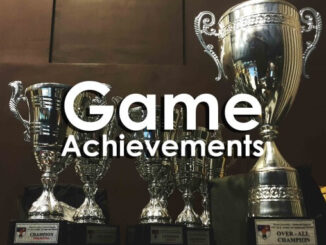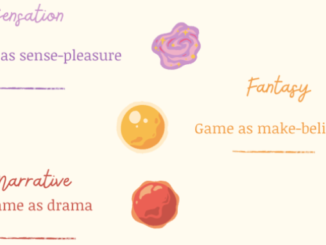
One of my favourite reference books, and one I turn to at least weekly is Geoff Engelstein and Isaac Shalev’s Building Blocks of Tabletop Games Design.
Building Blocks of Tabletop Games Design is available on Amazon
The authors make no claim of completeness, and indeed mention a couple of times in the foreword that they are not aiming to write an exhaustive list of mechanics, but it wasn’t until this week that I ever thought there was anything ‘missing’ from this excellent book.
I started to write this article, which is intended to look at ‘Social’ mechanics and structures in games, and naturally I turned straight to ‘Building Blocks’, which was when I noticed there was no ‘Social’ section, gathering together those mechanics which (the way I see it) use players themselves as ‘pieces’ in the game, manipulate player dynamics and relationships, and otherwise ‘play with’ people.
Some of the mechanics I am referring to are in the book, of course, but they are sprinkled throughout the sections. Many others are absent altogether, and I would argue, are missing precisely because a ‘Social’ category has not been included.
Game Structure
Engelstein largely deals with player interaction in the ‘Game Structure’ category, as it is here where the very basic rules about how players interact are contain. Are they competing, co-operating, playing as individuals or teams? Is the activity designed to be experienced alone or with others?
Two interesting game structures here are the Single Loser game and the Traitor Game. The former always reminds me of the old joke about the couple who are at the zoo, when the lion escapes. One person starts to run, and the other says ‘You’ll never outrun the lion’, to which she replies ‘I only need to outrun you’.
The Traitor game is somewhat more popular, and some outstanding games have been created recently. Secret Hitler is a great example, where players unaware of each other’s identity, work towards the goals of one of two sides, and are occasionally forced into acting in a way characteristic of the other side. My absolute current favourite, however, is Shamans, which extends the secret role mechanic by having a neat ‘ritual’ mechanic which changes players secret roles mid-game, which can lead to frantic strategic backtracking to head off the consequence you yourself have been working towards.
Shamans is available on Amazon as is Secret Hitler
Clearly, a game is not a game until it is played. So, there is a social aspect to every mechanic, rule and characteristic of a game. But for me, the criteria which separates the mechanics I think of as specifically ‘social’ from the rest is that they utilise social interaction or dynamics as an experience in the game.
Social Deduction and Hidden Goals
Some of the following are not strictly ‘mechanics’, either, but are characteristics, ways of playing (desirable and otherwise), which arise from the inclusion of certain mechanics and rules.
The Traitor Game is a subset of Social Deduction games, which is itself a subset of the Hidden Role game. In a social deduction game, it is part of the point of the game to discover the hidden role. But a hidden role does not always need to be discovered. Very often, hidden roles, and the goals which go with them are present in the game to provide differing motivations, and thus asymmetry to the game play.

Of course, roles and goals will not only inform the player’s own decisions and actions, but how they interact with other players too. Such mechanisms in learning games, provide a useful way to facilitate learnings around systems-thinking, and organisational and team dynamics, for example.
An interesting structure for such a game would not go as far as being a Traitor Game, but would nevertheless give ostensibly co-operative players differing roles, which might stymie their attempts to work effectively together towards a common strategy, thereby providing a pretty accurate analogue for the average department-based workplace.
Nor do differing roles have to be hidden. Even in games where plays can (theoretically) have complete knowledge of the goals of other players – take Root – A Game of Woodland Might and Right – each of the ‘factions’ in the games has differing moves and goals and therefore completely different strategies. The visibility of these strategies to all players makes it no less challenging to try to forward your own ends while blocking others from achieving theirs.
There is often much emergent complexity in such asymmetric games, as when playing a game where you all have the same goal, it is much easier to hold in mind both what you want to do, and what you need to stop opponents doing, than if their a multiple differing options for each of these.
Starting to get nasty
There is a whole class of games (often ‘party games’) where one plays as oneself, by which I mean that the games asks the real ‘you’, not some in-game character to make moves and take decisions based on your actual beliefs, values or other ‘real’ characteristic.

One frequent mechanic of such games is ‘Disclosure’, where you are asked to reveal something about yourself. Truth or Dare would be the classic example of this and also contains the ‘Social Manipulation’ mechanic – where the magic circle provides leverage to make players do what they would not ordinarily do ‘because it’s the rules’.
The 1980s game Scruples took disclosure to extremes, calling upon players to reveal their moral compass in response to various moral dilemmas – and is probably up there amongst the most friendship-breaking games of all time.
Scruples is available on Amazon (if you dare)
While party games which are actually designed to cause disagreements might be seen as somewhat unpleasant, some games recognise that the immersion that some from play (as opposed to less interactive forms of entertainment like films or TV) can be potentially damaging to social bonds. Fog of Love comes with a specific warning that players should be very wary of confusing their in-game relationship, with their own real-life relationship.
Fog of Love is available on Amazon
Emergent behaviours and game characteristics
What is most interesting to me from a games for learning perspective, is the kinds of gameplay and behaviours that emerge from ‘social’ mechanics. Some of these are clearly designed for, and form part of the ‘official’ gameplay.
However, perhaps inevitably when people themselves become playing pieces, or like in some Traitor Games, or ‘Disclosure’ games, you are playing with people’s values and sense of fairness, there is some blurring of the line between one’s ‘in-game’ and ‘real-life’ persona. The Magic Circle becomes very permeable indeed. This can be a desirable outcome, if you are using the game to facilitate deep reflections in the affective domain of learning, but it should be approached with caution.
Furthermore, many less desirable modes of play can emerge, leaving players feeling vulnerable and unhappy. Some player experiences / behaviours are discussed below:
Alliances
Some games (cooperative or semi-cooperative) feature ‘official’ alliances, while many others lend themselves to players making unofficial pacts to help one another, to either further their own ends or to ‘bring down’ another player. Sometimes such alliances ‘bend the rules’ – sharing information or resources that the rules do not strictly allow. While alliances can provide valuable learning about working as a team, negative outcomes can be that such alliances impact the perception of ‘fairness’ in a game , or even make some players feel ‘ganged up’ on.

Politicking
Most games include an element of preventing progress by other players, alongside trying to advance one’s own. Games with lots of opportunities for targeting other players will tend to lead to politicking. If in addition to ‘targetting’ mechanics (voting and judging mechanics as seen in Secret Hitler or Cards Against Humanity respectively, are good examples), the game includes social mechanics which influences one’s feeling towards another player (disclosure, social manipulation etc.), we have a recipe for policticking behaviour.
Such behaviour might include lying in wait, appealing directly to players to behave in certain ways, setting players against each other with a view to mopping up the spoils later, threatening and so on.
Revenge, Kingmaking and other options
An extreme outcome would be to adjust one’s stategy with a view to hurting the play of one person (maybe even at the cost of your own position), maybe because they hurt you previously, or because you don’t like what they have revealed in the game.
Making use of relative positions in play is a common form of politicking – both turn order or current position in terms of closeness to winning. For example, if an alliance has opted to target a player, but you are not the last player before the targetted player to take a turn, you can force a following player to take an action while reducing the obligation /cost to yourself.

When one’s own position in a game is such that you cannot win, some players opt for Kingmaking as an alternative. Perhaps this reflects the human need to feel in control of a situation. If I cannot win myself, I can at least impose my decision of who should win instead.
Offering ‘out-of game’ inducements for ‘in-game’ favours can be used in the absence of appropriate ‘in-game’ leverage. I have seen fetching drinks and food, or even the threat of withdrawing a promised lift home, all effectively used to manipulate a fellow player into making a certain play.
While much of the above may seem unpleasant, they are all very ‘human’ behaviours, which happen in real life, so with the caveat that no-one should ever leave a play session feeling genuinely hurt, it is definitely worth thinking about how social mechanics for both ‘positive’ and ‘negative’ behaviours can be effectively used (or allowed, or disallowed) in learning settings.
- James Bore – The Ransomeware Game - 13th February 2024
- Ipsodeckso – Risky Business - 23rd January 2024
- Review – Luma World Games - 15th December 2023





Be the first to comment